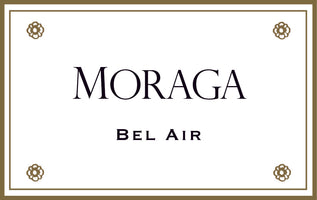2016 Moraga Red
 |
2016 Moraga Red The 2016 vintage was a continuation of California’s drought. Although we received more rain than we had the previous rainy season, at 8” it was still less than half of the 18” that Moraga historically receives. To compound the climate trend, 2016 was also the hottest year on record in California and Moraga experienced the implications in a profound manner. The temperature on June 19th hit 112O F, by far the highest temperature ever seen at Moraga. The damage was widespread, affecting half of the grapes in the most exposed blocks. Once the extent of the damage was assessed, we removed the damaged fruit and adjusted the canopy to ensure optimum balance between fruit and leaves. The good news in an otherwise concerning scenario was that the quality and concentration of the remaining grapes was outstanding. Our efforts in the vineyard translated to a small crop with outstanding flavor and tannin development. The commencement of harvest was textbook perfect – we picked the first of the red grapes on September 23rd, a handful of days after a minor heat spike that pushed physiological ripeness along and further concentrated flavors. Ripening proceeded at a rapid pace and we picked the balance of the grapes October 3rd, a bit earlier than most vintages, but in keeping with the elevated summer temperatures. The day before each pick, the vineyard crew walked the blocks to inspect the fruit, removing any clusters that looked less than perfect. Once the fruit was picked, we hand-sorted the clusters and then sorted the individual berries after destemming, removing any fruit that was shriveled or not fully colored. The destemmed and gently crushed berries soaked in the fermenters for about a week before Moraga’s native yeast magically transformed the grapes into wine. During the fermentation process, each individual lot was punched down by hand as many as seven times each day. Once the fermentations were complete, the fermenters were sealed for an extended maceration in order to optimize extraction and tannin polymerization, the process that softens tannins as the individual molecules link together. Each lot was individually pressed and aged in 100% new French oak barrels and underwent malolactic fermentation in barrel. The wines were racked from barrels and blended for bottling after about 21 months in barrel, then bottle aged for nearly two years before release. The aroma is quite complex, brimming with boysenberry, blackberry, and an herbal hint of cassis. Notes of cola, sandalwood, aromatic fresh tobacco, and cardamom are melded with Moraga’s signature minerality and a violet floral note. The entry is weighty, thick, and rich. Seamless, fine-grained soft tannins define a structure filled out with boysenberry and black currant flavors. Noticeable acidity contributes to a lengthy, mouthwatering finish. This bottling truly reflects the unique character of Moraga’s terroir and clearly demonstrates the influence of the growing season in concentration and flavor development. Moraga is one of the world’s great wine estates and we strive to ensure that the wine mirrors the characteristics of a specific time and a singular place, rather than the fingerprints of the property’s stewards. To your health and well-being! Scott Rich, Winemaker |
